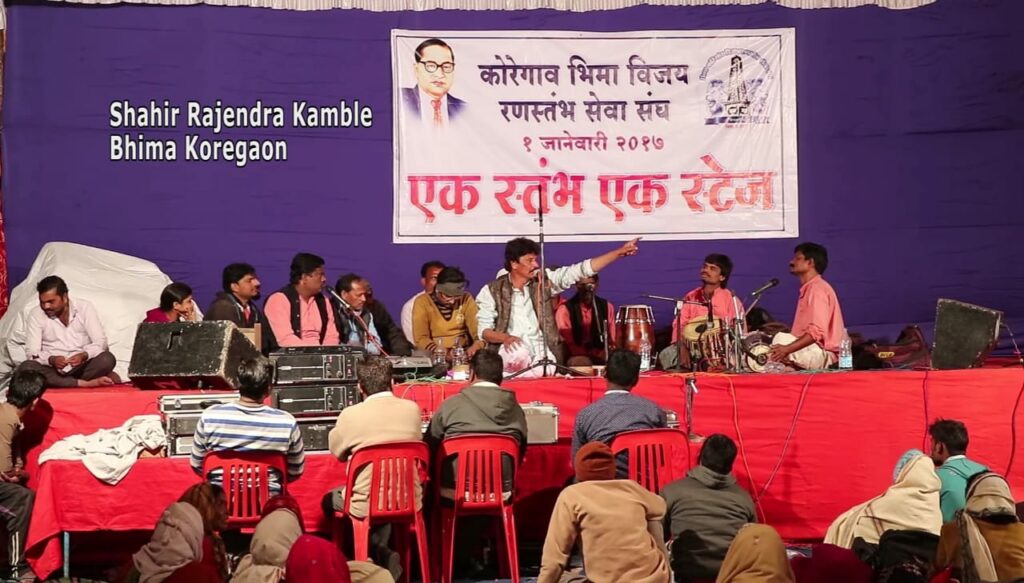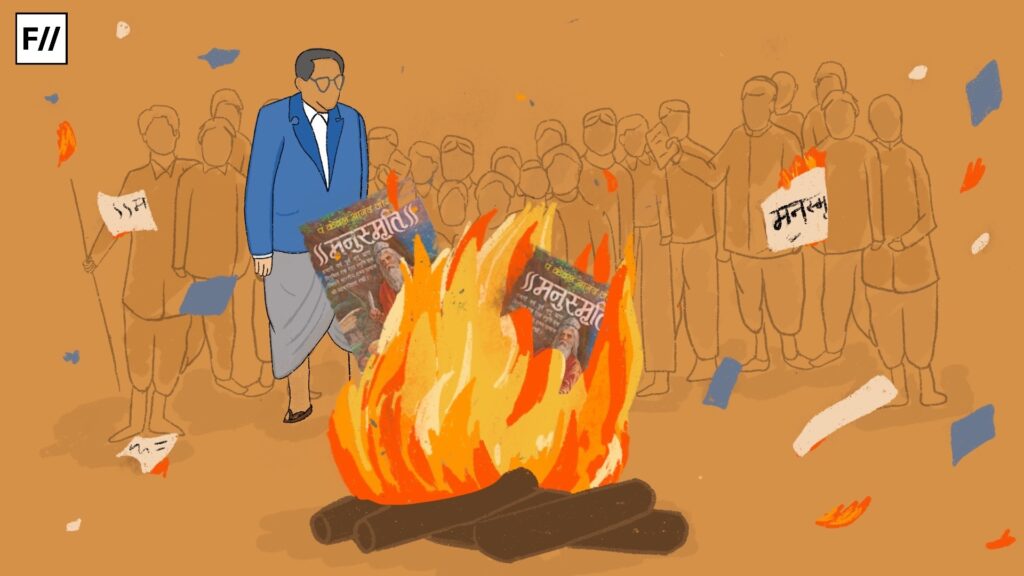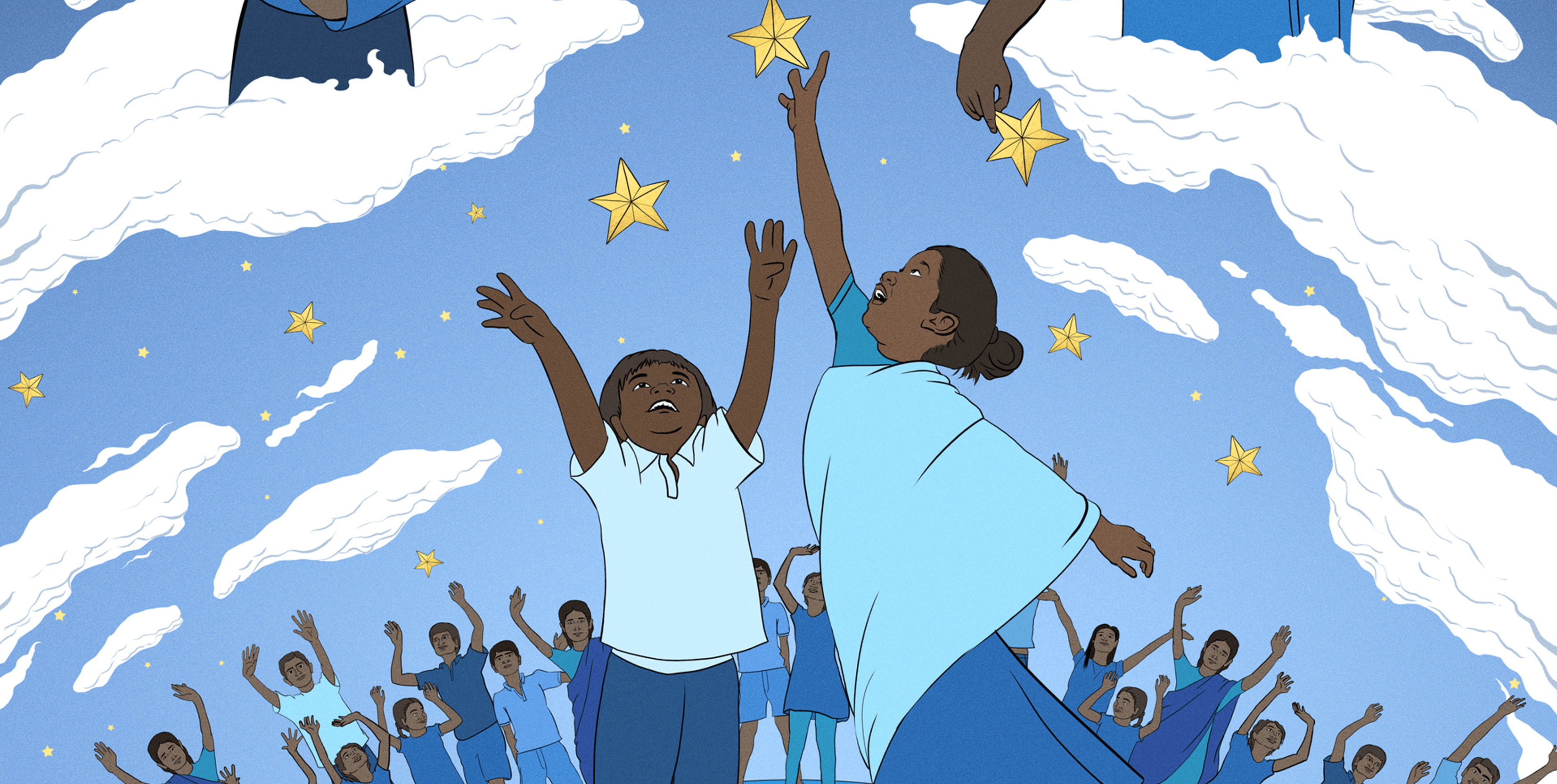In his short film ‘Lovers in the Afternoon’, Rajesh Rajamani portrays the story of a young man who makes amends to his irked partner by cooking her beef for lunch. In the end, the short film features a hashtag reading ‘#VoteOutHate‘, targeting the Hindutva politics of hate and requesting the Tamilian viewers to mindfully vote in 2019 Lok Sabha elections. Without displaying the mob lynching and saffron terror of the Hindutva forces in other parts of the country, the short film cautions that the Tamilian food culture of eating beef togethe—a symbol of affection, shared belonging, warmth and solidarity—is under threat if the voters do not vote wisely.
It is this notion of celebration and assertion of Dalit identity that is often missing in narratives and stories when retailed by the upper castes. Characters from marginalised communities are often recounted as one-dimensional figures drowned in their victimhood of helplessness and caste trauma, criminalised because of their political discourses, tarnished as transgressors in Hindu mythologies or justifying their fundamental right to representation.
Characters from marginalised communities are often recounted as one-dimensional figures drowned in their victimhood of helplessness and caste trauma, criminalized because of their political discourses, tarnished as transgressors in Hindu mythologies or justifying their fundamental right to representation.
Director Anubhav Singh’s movie ‘Article 15’ is a classic example where the plot revolves more on the Savarna’s encounter with atrocities than the Dalit’s visceral experience of caste. The Savarna hero, IAS Ayan Ranjan played by Ayushman Khurana represents the “benevolent benefactor” system that wakes up from its deep slumber to provide momentary relief to the oppressed only to restore the status quo without questioning or reconstructing the system. The film fails to keep the Dalit leader Nishad, starring Zeeshan Ayyub alive. Perhaps, “peaceful” justice could not be delivered by the radical discourse of a Dalit leader – an “anti-national” activist having a criminally distorted character profile.
Transcending the Savarna imagination
Looking beyond these facets are events of commemoration, movements of assertion and jayantis for celebration that encapsulate Dalit history. However, it is imperative to know that some of these events are widely recognized only when reported in a controversy and passed through the censorship of a Savarna gaze projecting vandalism. Apart from the deplorable notion of Bhima Koregaon that came with the violence in 2018, the annual gathering in Maharashtra marks the liberation of humanity, the struggle towards annihilation of caste, moving towards fraternity and justice. It symbolises pride and identity. The vijay dham, the pillar that stands at Bhima Koregaon is a testimony to the victory of the battle against the Peshwas in January 1818.
The community seeks inspiration by visiting the gathering every year. It gives us a recognition of our history through its recreation. With the participation of diverse groups such as the ‘Dalit Sena Cultural Group’ from Kerala, the commemoration proves to be an integrative event that brings the heterogenous and diverse community together. It strengthens our solidarity and recognises the collective aim of the movement. It embeds the community with a ‘consciousness of a kind’. Demonstrations of the Mahar coup, street plays coupled with bhim geet playing on loudspeakers and narration of battle stories through characters like ‘Sidhnak’ in the form of folktales and songs bring a cultural ambience to the eve. Such is the lived memory of the history of Bhima Koregaon.

Among many, celebrations like the ‘Buddhist Flag Day‘ symbolises the unity of Buddhist after its revival in 1880 in Ceylon (presently in Sri Lanka). The ‘Namantar Din‘ dignifies the 17 years of struggle to rename the then ‘Marathwada University’ after Dr. Babasheb Ambedkar. It is an assertion of the Dalit student’s right to representation in educational spaces. The ‘Self-respect Movement‘ led by Periyar in Tamil Nadu among its many aspirations to challenge the caste hierarchies, also recognises the importance of inter-caste marriages and securing bodily autonomy for women. The ‘Kalaram Mandir Satyagraha‘ of the 1930s by Ambedkar becomes a landmark in the history of Dalit liberation movement in modern Maharashtra.
Known occasions like the ‘Chavdar Tale Satyagraha’ demand equal access of the marginalised to public resources while the ‘Manusmriti Dahan Divas‘ is a revolt against Brahmanism that took place openly in the same campaign. The ideology of the ‘Satyashodhak Samaj‘ founded by Mahatma Jyotiba Phule and led by the Shudras and Ati-shudras was at the heart of the anti-Brahmin movement. The Kabir Jayanti among others, reaffirms the celebration of the saint’s literature inspired by Buddhist philosophy.

Similarly, Kanshiram’s Jayanti that falls on March 15 is a reminder of the cultural significance of the political movement against caste struggle. Kanshiram in one of his interviews stated that while the ‘Bahujan Samaj Party’ was a vehicle for political mobility, organisations like All India Backward and Minority Employees Federation (BAMCEF), Dalit Shoshit Samaj Sangharsh Samiti (DS4) and Buddhist Research Centre (BRC), were pivotal for the cultural revival of the Dalit community. He advocated refuting Brahmanism by adhering to practices that deeply reflect the Dalit culture.
In the context of cultural re-imagination, Kanshiram maintained that the rational consciousness of a Dalit can be awakened by the acknowledgment of their cultural roots. They should conserve a constructive relation with their immediate material reality. The Dalit should recluse from any participation in the Brahmin practices and customs. They should surrender all the casteist traditions imitated from the Brahmins. The masses should educate themselves and the community to invoke an anti-caste consciousness through everyday practices and by conversion to Buddhism.
Such remembrance of history provides a space for anti-caste imagination that is achieved through cultural celebration, sharing lived experiences of struggle, dispensing knowledge through anti-caste literature and reminiscing the work of Dalit leaders.
Such remembrance of history provides a space for anti-caste imagination that is achieved through cultural celebration, sharing lived experiences of struggle, dispensing knowledge through anti-caste literature and reminiscing the work of Dalit leaders. Carnivals at Chaityabhoomi and Deekshabhoomi in Maharashtra are spaces that lead to the emergence of counter culture, one that challenges the hegemony of the dominant.
Also read: Writing Our Own Histories – Why We Need Dalit History Month
Distorting Dalit histories
George Orwell in his novel ‘1984’ quoted, “The most effective way to destroy people is to deny and obliterate their own understanding of their history.” The oppressor castes through their hegemony have convincingly and consensually maligned Dalit history. Counter historical accounts of Jhalkari Bai, Ayyankali from Kerala, Birsa Munda, a tribal leader from Bihar, critical works of Ambedkar among many others are sidelined in the mainstream historical narratives.
In the case of Bhima Koregaon, not only is the history of the 1818 battle against the Peshwas dismissed as inauthentic and unverified, but Mahar soldiers in the regiment are accused as traitors based on “nationalistic concerns”. It is true that most of the people from the Dalit community have less idea of their own history since the Brahmanical narratives of history over a period of time, have become the common history. However, historians critical of the upper caste hegemony argue that the historical accounts of nationalism permeated with a Brahmin consciousness defied any true service to emancipation as it assimilated Brahmanism with colonialism, inordinately oppressing the already marginalised. The upper caste nationalism has served little in the form of ideas and participation in achieving freedom for the Dalit masses against the colonial and caste oppressors.
Historians critical of the upper caste hegemony argue that the historical accounts of nationalism permeated with a Brahmin consciousness defied any true service to emancipation as it assimilated Brahmanism with colonialism, inordinately oppressing the marginalized.
Chinnaiah Jangam, the author of ‘Dalits and the Making of Modern India’ and a historian in his interview with the Indian Cultural Forum states how Dalits have been denied access to a writing culture. The only way through which they could retain their history and culture was through lived memory of individuals or through collective memories of the caste community. These memories were recited in the form of folktales and folk songs. Oral histories such as these are vulnerable to the accusations of scientificity and verifiability. The scientific method of documenting histories bait accounts of Dalit history recounted through social memory.
The author explains how such collective memories are narrated and performed by the ‘satellite’ caste. All Dalits have a dependent ‘satellite’ caste whose primary duty is to perform and narrate the history of their patron caste. For example, the Chandus– a satellite or “dependent” caste of the Madigas of Telangana narrate alternate histories of Dalits countering and debunking the Brahmanical narratives. These accounts subvert the Brahmanical puranas and exhibitions such as the Ramayana and the Mahabharata. Counter narratives of Dalit histories challenge the singular dominant narratives imbued with Brahmanical philosophies and caste ideals.
Also read: Dalits & Religious Conversion: Tracing The History Of The Neo-Buddhist Movement
Reclaiming agency on history and culture
Commemoration as an act asserts bodily authority over history and culture. It inserts agency over the event and reclaims ownership of the Dalit identity. It delineates one from the identity of an oppressed to an identity of a survivor. It refutes the dominant voice of a homogenised history and surfaces the struggle of their leaders and collective action of the Dalit masses for a dignified life.
Braj Ranjan Mani, in his book ‘Debrahmanising History:Dominance and Resistance in Indian Society‘ traces the roots of rational democratic traditions inherent in the teachings of the Buddha, Ashoka and Kabir among many other leading figures that emerged in the anti-caste movement in the ancient and medieval Indian history. The book further elaborates on how this tradition was carried forward by leaders like Ambedkar and Periyar in the modern times. The project was to ‘debrahmanise’ India’s social history through an attempt at integrating these egalitarian trends with contemporary Indian culture and history.
The powerful egalitarian thrust of the bhakti movements like the Varkari Movement in Maharashtra among others in their use of the vernaculars and advocacy of a radical religiosity and devotionalism, consistently pose a challenge to Brahmanical superiority and demand for a total annihilation of the caste order. The author critiqued the Orientalist for constructing a neo-Hinduism through its resurgence in colonial India that renewed the authority of Brahmanical texts and interpretations.
Also read: The Bhakti Movement and Roots of Indian Feminism
Nevertheless, the displaced rendering of the Dalit history from the realms of speech is now coming to the forefront with increased awareness within the community. There is an emergence of an opposed history centralising our stories, those making space for cultural articulation through political recognition. Celebrating our history not only sheds light on the truth of the past but also consolidates the future in which our voices shall always be heard.
References
- Why Dalit History Matters
- Dalit memory, imagination and the nationalist narrative – Indian Cultural Forum
- Bhima Koregaon: Commemoration as an Alternative Narrative for the Dalits
- Kanshi Ram’s Bahujan movement was cultural, not just political
- The Discreet Charm of the Savarnas Archive
- The Battle of Bhima Koregaon Documentary Film Official Release | Director – Somnath Waghamare
- Braj Ranjan Mani,’Debrahmanising History:Dominance and Resistance in Indian Society‘;2005 by K.Satyanarayana
Featured Image Credit: Freedom Rios and Thenmozhi Soundararajan via Dalit History Month
About the author(s)
Mansi Bhalerao is an Ambedkarite feminist, an undergraduate at Miranda House. She is an aspiring student of Sociology, trying to navigate and assert her praxis.





I am really enjoying reading these articles. I am assuming the writers are all Dalits and not Privileged upper caste Savarnas. I am one of them, I do not care to hear what they have to say. We cannot change if we are their voice. I think we should shut up and let the Dalit community talk.